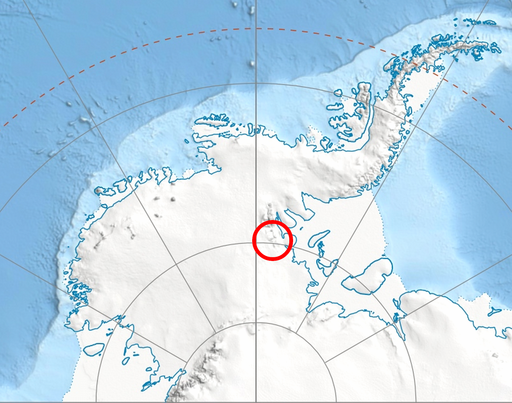Difference between revisions of "Mount Johns"
Jump to navigation
Jump to search
(Created with content derived from Wikipedia) |
m (image) |
||
| Line 1: | Line 1: | ||
'''Mount Johns''' (79°37′S 91°14′W) is a solitary [[nunatak]] rising 90 metres (300 ft) above the ice surface, about 50 nautical miles (93 km) west of the Heritage Range, in the | [[File:512px-Heritage-Range-location-map.png|thumb|Approximate location of Mount Johns]]'''Mount Johns''' (79°37′S 91°14′W) is a solitary [[nunatak]] rising 90 metres (300 ft) above the ice surface, about 50 nautical miles (93 km) west of the Heritage Range, in the Ellsworth Mountains of Antarctica, within the declared borders of Westarctica. It was discovered by the Marie Byrd Land Traverse Party on January 27, 1958, and was named for Robert H. Johns (1932–58), an International Geophysical Year Byrd Station meteorologist in 1957 who died in the Arctic following his tour of duty at Byrd Station. | ||
[[Category: Geography of Westarctica]] | [[Category: Geography of Westarctica]] | ||
Revision as of 05:04, 16 May 2018
Mount Johns (79°37′S 91°14′W) is a solitary nunatak rising 90 metres (300 ft) above the ice surface, about 50 nautical miles (93 km) west of the Heritage Range, in the Ellsworth Mountains of Antarctica, within the declared borders of Westarctica. It was discovered by the Marie Byrd Land Traverse Party on January 27, 1958, and was named for Robert H. Johns (1932–58), an International Geophysical Year Byrd Station meteorologist in 1957 who died in the Arctic following his tour of duty at Byrd Station.
